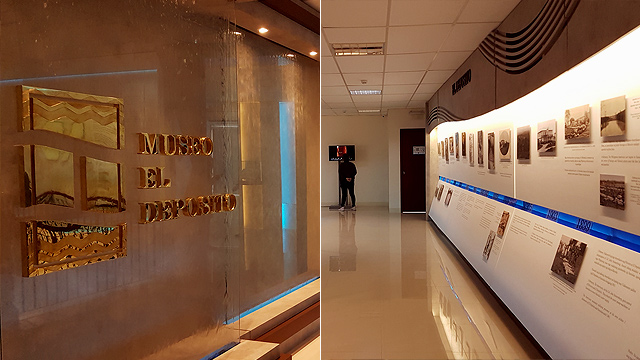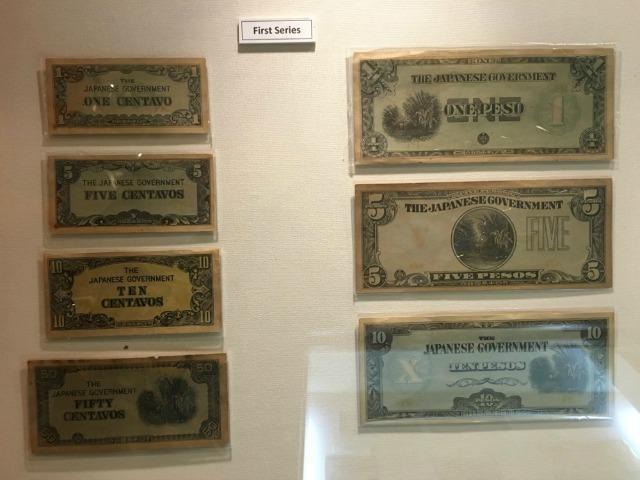While there are still leisure travel restrictions due to the pandemic, everyone already dreams of going around Metro Manila again. But instead of heading to the usual places, you might want to explore some unusual attractions within the city. Here are some of the unusual sights around the metro you can look forward to visiting when the opportunities come.
Unusual sights no. 1: El Deposito

One of the most unusual sights in Manila that you have to check out is El Deposito in San Juan. What makes this place unique is that you will not see it above ground. Instead, you will have to go down below to see it.
That is because El Deposito is a Spanish era underground water reservoir. It was built in 1878 to 1882 under the supervision of Spanish engineer Genaro Palacios. Palacios intended the reservoir as the centerpiece of the Carriedo Waterworks plan conceptualized almost a hundred years earlier.
The reservoir had to be massive to fulfill that role. It consisted of a central canal that connects to 25 smaller ones. Each of these canals is five meters high and three meters wide. All in all, the system can hold 36,000 cubic meters of water and supply over 300,000 residents.
El Deposito got its water from the Marikina River and coursed it to Santolan through iron-cast pipes. To keep the water fresh, the reservoir used a system of ventilation shafts and filters. This helped the city deal with waterborne diseases prevalent during its time.
Historical significance
Beyond its engineering significance, El Deposito also played a role during various parts of Philippine history. During the Philippine Revolution, Andres Bonifacio and the Katipunan planned to capture it to sabotage Manila’s water supply. Meanwhile, in the Philippine-American War, the Americans used the reservoir and its tunnels as a headquarters and armory.
During World War II, the Japanese captured El Deposito and used it as storage space. It also served as a hospital for tuberculosis patients and a firing range. After the war, the various structures went into disrepair.
Restoration of the site began in 2016, and the attraction is expected to open this year. Here, you will be able to explore the various tunnels. Meanwhile, the adjacent El Deposito Museum will walk you through the reservoir’s colorful history.
Unusual sights no. 2: Chinese Cemetery

Since it is just a month away before All Saints Day, many tourists will likely check out cemeteries. One of the most unusual of these is the Manila Chinese Cemetery in Santa Cruz. Here, you will find a colorful tribute to the dead.
The main attraction here are two sections dubbed Millionaires’ Row and Little Beverly Hills. You will find what seems to be many lavish houses lining these streets. However, these are actually mausoleums for some of the richest Filipino-Chinese residents in the country.
But while they are the dead’s final resting place, these mausoleums are fully-furnished for the living as well. You will find amenities like bathrooms, air conditioning, and stocked kitchens in these buildings. The relatives of the dead use these during their regularl visits, particularly on All Saints Day. They offer food and incense, then stay with their departed families the whole day.
The cemetery’s history
These grand mausoleums and the cemetery itself has a rather interesting story. The cemetery was initially built in the 19th century to accommodate non-Catholic Chinese who were refused burial in church-run cemeteries by the Spanish authorities. In response, the wealthiest members of the Chinese community decided to build the grand cemetery and show their influence.
Through the years, many prominent Filipino-Chinese were laid to rest in the cemetery. These include Ma Mon Luk, founder of the famous chain of mami restaurants, and Vicente Lim, a brigadier general during World War II. Apolinario Mabini’s remains also laid here until 1956.
Other sights to see
While you will marvel a lot at the Art Deco-styled mausoleums, there are more interesting sights to see within the Chinese Cemetery. One of these is the Carlos Palanca Memorial, which honors the eminent 18th-century community leader and businessman. Palanca played a key role in establishing the cemetery through his efforts as a gobernadorcillo.

There is also the Ruby Tower Memorial. It serves as a memorial to the 260 people who died when the Ruby Tower in Binondo collapsed during the 1968 Casiguran earthquake. Near it is the Martyrs Hall commemorating the bravery of those who died in World War II.
Unusual sights no. 3: The Money Museum

You probably have visited most of the historical museums in Metro Manila. But the Money Museum in Malate is still worth your time. What makes this an unusual sight is that it gives you a unique look at our history through the money we used.
The Bangko Sentral ng Pilipinas runs the museum, which features several displays chronicling the development of our local currency. You also get to see how the BSP mints coins and bills in other exhibits.
What to see here
One of the most interesting displays in the Money Museum is its collection of coins from the early Spanish era. It also houses various artifacts that pre-colonial Filipinos used to trade for goods. You will also get to see the different commemorative coins and bills that the BSP issued for specific events.

Another noteworthy exhibition is the collection of “Mickey Mouse” money. These are the currencies that the country used under the Japanese government during World War 2. During that time, Philippine money became so undervalued that people had to bring a bayong-full of these to buy a kilo of rice.
Be ready to explore Manila’s strangest sights
These three attractions offer a unique look at the country and its history that you might not have seen yet. And there are more unusual sights like these scattered around Metro Manila. Discovering and exploring these places will be a great adventure to look forward to once the pandemic ends.

